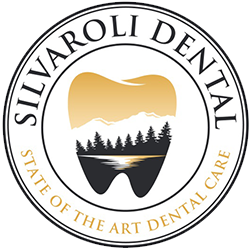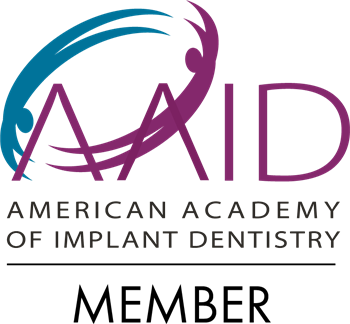We’ve all been there, one minute you are walking into the coffee shop to enjoy your latte and a pastry…. Next, you take your first sip and BOOM, that shooting pain appears in your mouth. The pain seems to be triggered by everything – hot drinks, cold water, sweet treats and even your favorite savory snack. If you’re suddenly hit with a toothache, it’s important to address the pain as soon as possible. If not treated quickly, this sensitivity can soon become a persistent pain and can lead to more serious conditions.
What causes a toothache?
Infection, decay, injury, or loss of a tooth are the most common causes of dental pain. A toothache can be caused by anything from a popcorn hull stuck in your gum to a broken tooth or a bacterial infection. Some toothaches may come from temporary gum irritation, and some are caused when the nerve in the root of a tooth or surrounding a tooth is irritated. The pain can be only temporary or can become something more serious. In either case, toothaches often need treatment by a dental professional to resolve the pain and whatever problem is causing it.
What can I do to help relieve toothache pain?
The first action to take is to make an appointment with your dentist and let them know the type and severity of pain you are experiencing. Next, try these six at home tips to treat toothache pain until you can get to your dentist. Be sure to avoid any of these methods if you have an infection, and always consult with your doctor or dentist before trying any home remedies.
1. Use dental floss to remove any food particles that may be stuck in between your teeth
It seems like everytime you go to the dentist, you are reminded to floss more frequently. Flossing is considered interdental cleaning. Scientifically speaking, it helps remove interproximal dental plaque (the plaque that collects between teeth). It also helps remove debris, such as food particles that can cause bacteria if not removed.
Flossing not only helps prevent a number of dental issues, but can also relieve toothache pain. By removing lodged food particles from between your teeth, you’re preventing the germs and bacteria in your mouth from spreading and potentially becoming infected. Flossing can help relieve toothache pain by removing particles or bacteria that may be causing the pain and inflammation.
To floss properly, gently glide the floss up and down, rubbing it against both sides of each tooth. Don’t glide the floss into your gums. This can scratch or bruise your gums. As the floss reaches your gums, curve the floss at the base of the tooth to form a C shape. Stop and rinse your floss if particles become stuck to the string. Repeat between all of the spaces between your teeth.
If you haven’t flossed in awhile, your gums may bleed. This is caused by bacteria, plaque, and tartar along your gum line that irritates and inflames your gums. When you attempt to remove that buildup by flossing, your swollen, inflamed gums may start to bleed. Furthermore, if there are particles stuck between your teeth causing tooth pain, it is common for your gums to bleed slightly when the particles are removed. If you are concerned about the bleeding or experiencing tooth or gum pain, consult your dentist immediately.
2. Rinse your mouth with warm water and salt to help clean the area around the tooth
At the scientific level, a warm saltwater rinse helps relieve toothache pain by increasing the pH- balance inside the mouth, creating a more alkaline environment in your mouth, making the bacteria causing the toothache no longer able to thrive. The harmful bacteria causing your pain prefers an acidic environment. Once the pH- balance is neutralized, the bacteria subsides, allowing your mouth to become less inflamed and painful.
A saltwater rinse can also help your toothache by gently rinsing away food particles that are stuck between your teeth. This further helps the bacteria to subside and will not only act as a disinfectant, but will also help reduce inflammation.
To make a saltwater rinse, follow these steps:
- Mix a half a cup of warm water (ensure the water is not hot or boiling) with a one-third teaspoon of sea salt.
- Stir the mixture until the salt partially dissolves in the warm water.
- Swish the mixture around in your mouth for thirty seconds or longer. Optional: lean back and gargle with the salt mixture to kill bacteria in your throat as well as our mouth.
- Spit the water in your sink when you are finished as swallowing salt water can cause stomach discomfort.
3. Apply a cold compress to the outside of your cheek to reduce swelling
Sometimes it seems like ice is the cure for everything, and a toothache is no exception. Applying a cold compress to the outside of your cheek on the painful side of your mouth can help to reduce toothache pain.
Why does it work? The application of a cold compress constricts the blood vessels in the inflamed and painful part of the mouth, slowing the flow of blood to the affected area. This helps numb the pain by reducing blood flow, thus reducing inflammation and swelling that can cause a toothache.
Applying a cold compress can be especially helpful at night before bed and upon waking up in the morning. Generally, toothaches are more painful at night and first thing in the morning because of your sleeping position. Laying down causes more blood to rush to your head, which adds extra pressure on the sensitive area (in this case, where you are experiencing tooth pain). The pain and throbbing sensation is likely lessened during the day because you are more likely to be standing or sitting. Applying a cold compress at these times can help reduce the additional blood flow and alleviate pain.
A cold compress can be made using an ice pack or by taking a few ice cubes and wrapping them in a towel. Place the compress on your cheek outside of the painful area for 15 minutes on and off. You can repeat this remedy multiple times a day.
4. Take ibuprofen or acetaminophen to help with pain relief
In addition to the above remedies, over-the-counter nonsteroidal anti-inflammatory drugs (NSAIDs), such as ibuprofen (Advil, Motrin IB, and generic) and naproxen (Aleve and generic), can help reduce toothache pain. These remedies work particularly well against dental pain because they block the enzyme that causes your gums and painful areas to become red and swollen.
Always consult your doctor before taking any medication and use as directed.
5. Use a peppermint tea bag on the painful tooth
Peppermint is widely known for its beneficial health properties. The leaf and oil are often used for medicinal purposes, most frequently for the common cold, cough, inflammation of the moth and throat, sinus infections, and other respiratory infections.
Research also shows that peppermint contains antibacterial compounds, meaning it could help fight the bacteria that are causing the tooth pain. Additionally, peppermint has numbing properties that can stop the throbbing pain of a toothache.
Peppermint tea can be found at nearly any grocery store. To get the most out of the tea bag, ensure you purchase a pure peppermint tea bag without other herbs.
For toothache relief, follow these steps:
- Boil water (this can be enough for a pot if you plan to drink the tea after, or can be just a cup since you will only use the tea bag for pain relief).
- Add the tea bag to hot water and allow the tea to steep (the tea bag will have specific directions, likely between 1 – 5 minutes).
- After tea is ready, ensure the bag is cool enough to not bother your skin or mouth when applied. If it is still too hot, place the teabag in the freezer for 2-3 minutes.
- Remove the teabag and apply directly to the affected tooth for 10 – 30 minutes (longer if you need additional pain relief). Optional: swish the tea inside of your mouth in order to enjoy further pain relief.
6. See a dentist as soon as possible for proper diagnosis and treatment
This is the most important part! Make sure you call your dentist immediately and inform them of the type and severity of your pain. If you have an infection, it is particularly important to see a dentist immediately to avoid further dental pain and issues.
We hope these tips help you feel better until you can schedule a dentist appointment. We understand how stressful it is when an injury sidelines your daily routine for even just one day; but with the right knowledge and resources on hand like those outlined above, we hope toothaches won’t disrupt your life in the future.
Lastly, the best medicine is preventative medicine! Always practice healthy oral hygiene to avoid visiting the dentist more than you need to – even though we love seeing you!
If you are looking for a new dentist in the Reno area, or have further questions regarding your oral health, contact Silvaroli Dental by filling out our contact form or giving us a call at (775) 453-2522.
Contact
Hours
Location
601 W. Moana Ln #1
Reno, NV 89509






